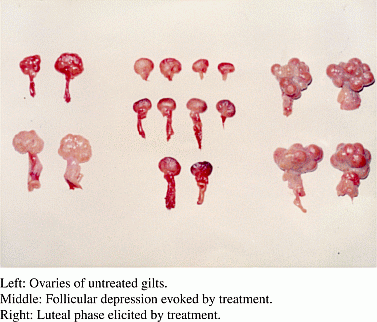ICEECE2012 Poster Presentations Female Reproduction (99 abstracts)
Solution of an old endocrinological puzzle the rise and fall of an endocrinological doctrine Dr. László Makay, DVM H-2000 Szentendre, Sztaravodai u. 42, Hungary Tel./Fax: +36 26 316 791 E-mail: [email protected]
L. Makay
University of Veterinary Sciences, Budapest, Hungary.
Already a long time ago, the subtle adaptability of the reproductive endocrine system made it possible to elaborate a hormonal castration method for female pigs, which was based on the administration of a high-dose oestrogen (diethylstilboestrol) injection. The phenomenon was believed to be the result of a negative feedback reaction. However, this theory could not explain why more than 20% of the animals treated did not respond properly to the treatment. Therefore, the goal of these investigations was to get proper insights into the functioning of the relevant reproductive endocrine system. Although the treatment is no longer in use and the studies took place long ago, the results of the study presented here demonstrate a specific, so far unknown reproductive endocrine feedback phenomenon. Accordingly, the pig’s reproductive endocrine system can respond to the administration of high-dose oestrogen injection by developing either of two different, opposite kinds of reactions, i.e. two distinct mechanisms of action. Whenever the reproductive endocrine system is able to do so, it always reacts by achieving a positive feedback reaction (the successful variant of reactions) rather than a negative one as had been believed previously. In the absence of this ability the negative feedback reaction (the unsuccessful variant of reactions) develops. However, this latter can be prevented by stimulating the activity of the reproductive endocrine system.
These findings disprove an old endocrinological doctrine and establish a new one.
Images of the ovaries: Left: ovaries of untreated gilts.
Middle: follicular depression evoked by the treatment (negative feedback reaction).
Right: luteal phase brought about by the treatment (positive feedback reaction).

Left: Ovaries of untreated gilts.
Middle: Follicular depression evoked by treatment.
Declaration of interest: The authors declare that there is no conflict of interest that could be perceived as prejudicing the impartiality of the research project.
Funding: This research did not receive any specific grant from any funding agency in the public, commercial or not-for-profit sector.




